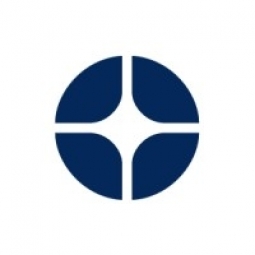Customer Company Size
Large Corporate
Region
- America
Country
- United States
Product
- Decision Lens
Tech Stack
- Analytical Hierarchy Process (AHP)
Implementation Scale
- Enterprise-wide Deployment
Impact Metrics
- Productivity Improvements
- Customer Satisfaction
Technology Category
- Analytics & Modeling - Predictive Analytics
Applicable Industries
- Healthcare & Hospitals
Applicable Functions
- Logistics & Transportation
Use Cases
- Predictive Replenishment
Services
- Data Science Services
About The Customer
The United Network for Organ Sharing (UNOS) is a private, non-profit organization that serves as the nation’s Organ Procurement and Transplantation Network (OPTN) under contract with the Federal government. UNOS brings together hundreds of transplant organ procurement professionals and thousands of volunteers to help make lifesaving organ transplants possible each day. Over the last 25 years, the number of organ transplants performed in the U.S. has doubled, but as long as there are people on the waiting list, there is work to be done.
The Challenge
The United Network for Organ Sharing (UNOS) is a non-profit organization that serves as the nation’s Organ Procurement and Transplantation Network (OPTN). Over the last 25 years, the number of organ transplants performed in the U.S. has doubled, but there are still people on the waiting list. The current system for matching donated organs to potential recipients includes a classification system with dozens or hundreds of characteristics for each organ. This system has hard boundaries on the different classifications, which can result in unfair allocation of organs. For example, someone who qualifies for an organ 251 miles away is lower on the priority list than those who are only 249 miles away, even if other attributes were comparatively more urgent.
The Solution
To make the process more fair and flexible, the OPTN Lung Transplantation Committee is developing a continuous distribution system based on assigning points for different attributes, rather than having hardline classifications for each of the factors involved. This way the allocation system would be able to account for all factors simultaneously, accounting for the importance of each factor in determining where a patient falls on the list. UNOS partnered with Decision Lens to collect the feedback necessary to prioritize attributes against each other and assign points to those attributes. Almost 200 participants were able to login and use the system. UNOS had researched a few different AHP tools, prior to choosing Decision Lens and liked the easy-to-use user interface for volunteers viewing reports and for the patients and transplant professionals participating.
Operational Impact
Quantitative Benefit

Case Study missing?
Start adding your own!
Register with your work email and create a new case study profile for your business.
Related Case Studies.

Case Study
Hospital Inventory Management
The hospital supply chain team is responsible for ensuring that the right medical supplies are readily available to clinicians when and where needed, and to do so in the most efficient manner possible. However, many of the systems and processes in use at the cancer center for supply chain management were not best suited to support these goals. Barcoding technology, a commonly used method for inventory management of medical supplies, is labor intensive, time consuming, does not provide real-time visibility into inventory levels and can be prone to error. Consequently, the lack of accurate and real-time visibility into inventory levels across multiple supply rooms in multiple hospital facilities creates additional inefficiency in the system causing over-ordering, hoarding, and wasted supplies. Other sources of waste and cost were also identified as candidates for improvement. Existing systems and processes did not provide adequate security for high-cost inventory within the hospital, which was another driver of cost. A lack of visibility into expiration dates for supplies resulted in supplies being wasted due to past expiry dates. Storage of supplies was also a key consideration given the location of the cancer center’s facilities in a dense urban setting, where space is always at a premium. In order to address the challenges outlined above, the hospital sought a solution that would provide real-time inventory information with high levels of accuracy, reduce the level of manual effort required and enable data driven decision making to ensure that the right supplies were readily available to clinicians in the right location at the right time.

Case Study
Gas Pipeline Monitoring System for Hospitals
This system integrator focuses on providing centralized gas pipeline monitoring systems for hospitals. The service they provide makes it possible for hospitals to reduce both maintenance and labor costs. Since hospitals may not have an existing network suitable for this type of system, GPRS communication provides an easy and ready-to-use solution for remote, distributed monitoring systems System Requirements - GPRS communication - Seamless connection with SCADA software - Simple, front-end control capability - Expandable I/O channels - Combine AI, DI, and DO channels

Case Study
Driving Digital Transformations for Vitro Diagnostic Medical Devices
Diagnostic devices play a vital role in helping to improve healthcare delivery. In fact, an estimated 60 percent of the world’s medical decisions are made with support from in vitrodiagnostics (IVD) solutions, such as those provided by Roche Diagnostics, an industry leader. As the demand for medical diagnostic services grows rapidly in hospitals and clinics across China, so does the market for IVD solutions. In addition, the typically high cost of these diagnostic devices means that comprehensive post-sales services are needed. Wanteed to improve three portions of thr IVD:1. Remotely monitor and manage IVD devices as fixed assets.2. Optimizing device availability with predictive maintenance.3. Recommending the best IVD solution for a customer’s needs.

Case Study
HaemoCloud Global Blood Management System
1) Deliver a connected digital product system to protect and increase the differentiated value of Haemonetics blood and plasma solutions. 2) Improve patient outcomes by increasing the efficiency of blood supply flows. 3) Navigate and satisfy a complex web of global regulatory compliance requirements. 4) Reduce costly and labor-intensive maintenance procedures.

Case Study
Cloud-based healthcare solution for Royal Philips
Royal Philips wanted to launch its cloud-based healthcare solution HealthSuite Digital Platform in China to deliver services to help cope with challenges related to urbanization and population growth. Philips wanted to achieve this goal by combining mobile, cloud computing and big data technologies. To bring this platform and product to market, Philips required cloud computing and local technical service capabilities in China, in addition to a flexible IT infrastructure that could handle user requests.








